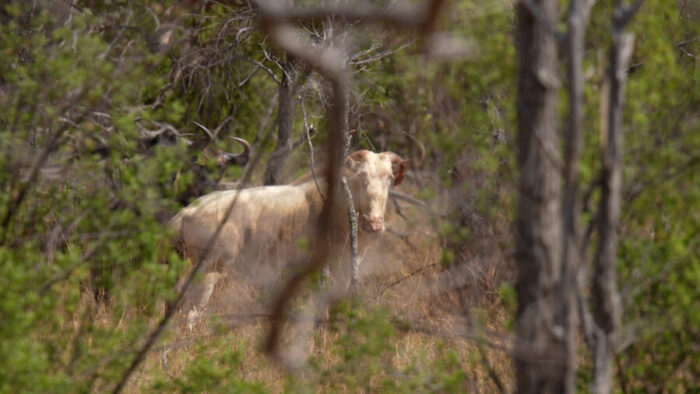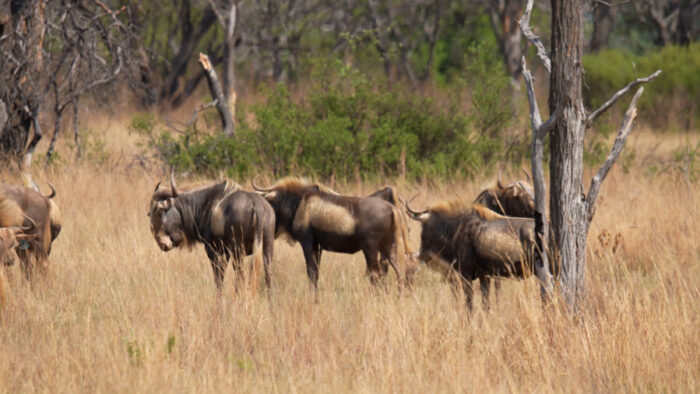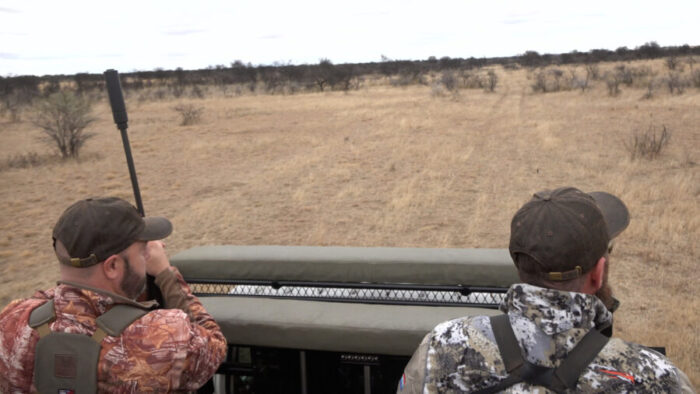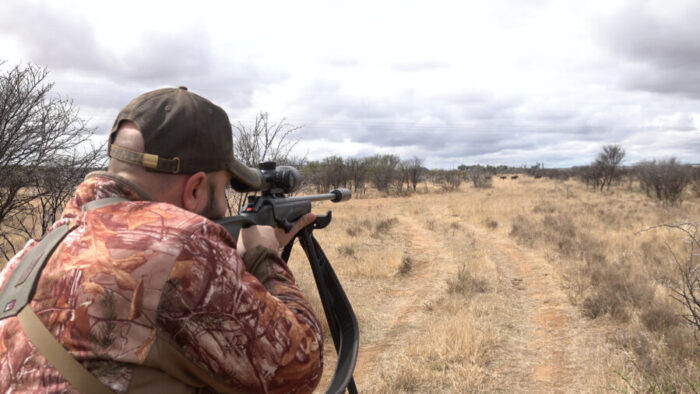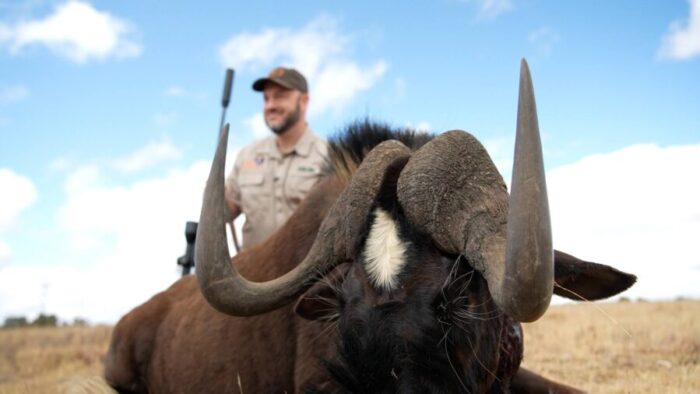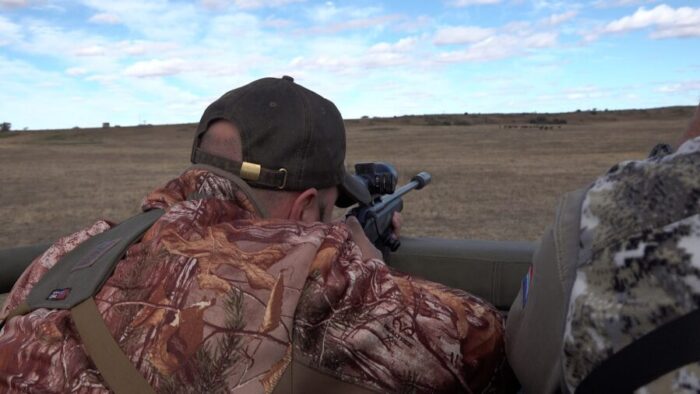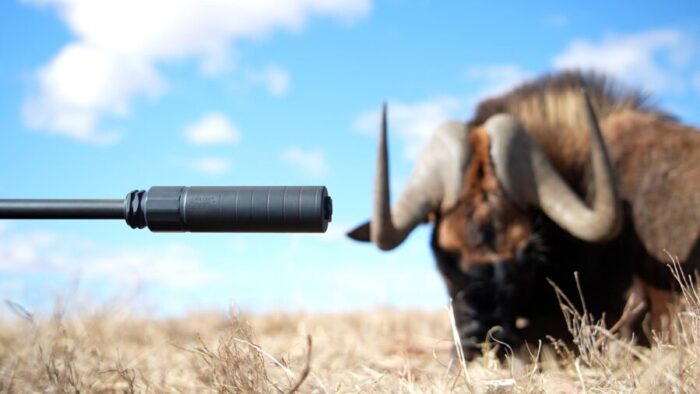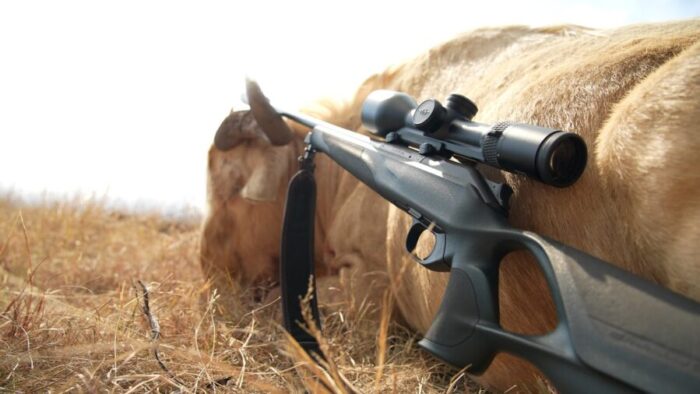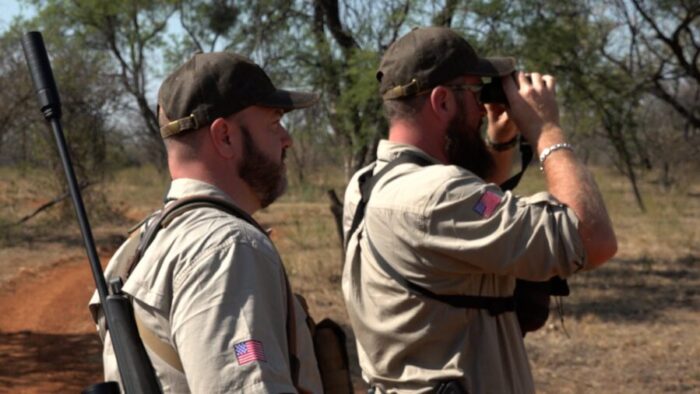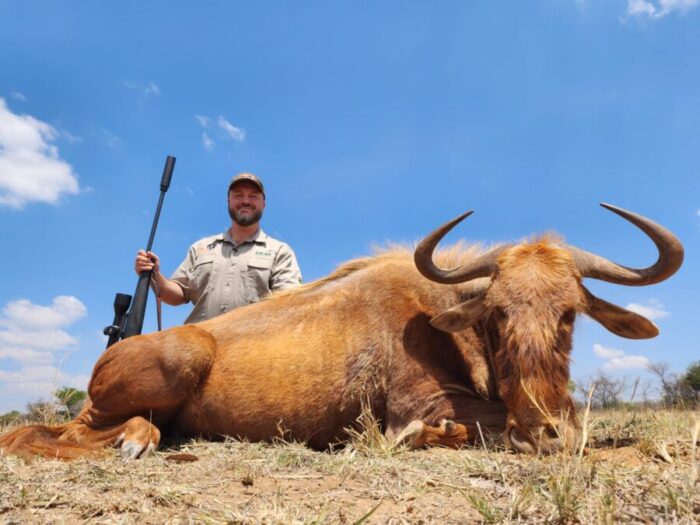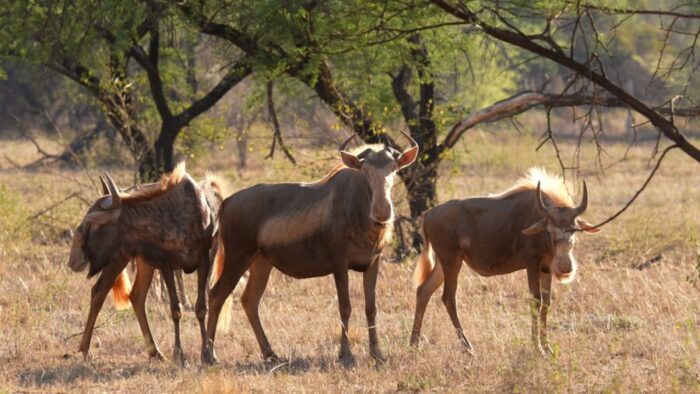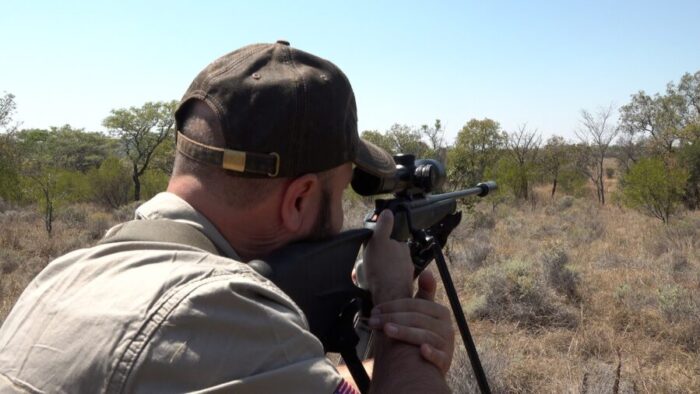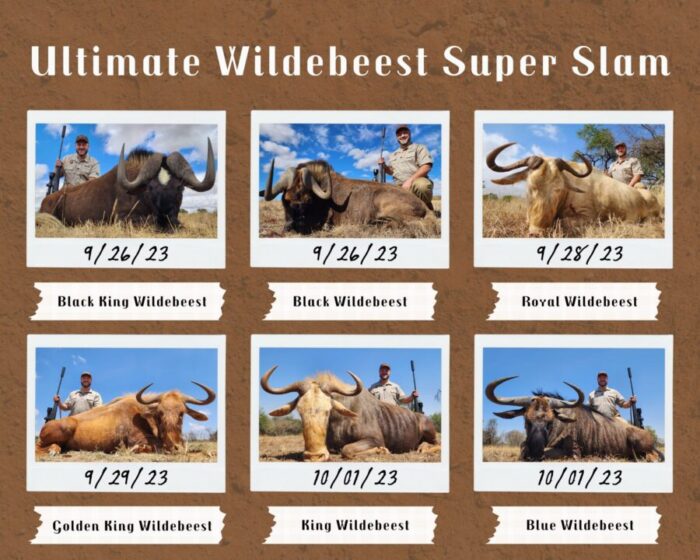World’s First Wildebeest Super Slam: Every Color in One Trip
“We just did something no one else has done! All six colors of wildebeest in six days.” I’m high-fiving Rumano De Beer, owner and PH of RDB Safaris and someone who, over the past year, has become a very good friend. We’re both in shock, our adrenaline pumping.
“We just did something no one else has done! All six colors of wildebeest in six days.”
I’m high-fiving Rumano De Beer, owner and PH of RDB Safaris and someone who, over the past year, has become a very good friend. We’re both in shock, our adrenaline pumping. We’re standing over a blue wildebeest marveling over the fact we just did something no one has done before. We just completed the first-ever Ultimate Wildebeest Super Slam, shooting all six color variations of wildebeest, and we did it in one incredible trip. How we got to setting this world record is quite the story.
The Beginning of a Remarkable Hunting Adventure in Africa
This record slam came about in a whirlwind. At the beginning of 2023, at the SHOT Show in Las Vegas, my friend Diego was speeding me through the aisles of vendors. He wanted to introduce me to Rumano and RDB Safaris.
“Jeremy, this is a guy you must meet,” Diego said. “He showed me pictures of his place in South Africa, and I know you will want to hunt there.”
“Ok, sure,” I assured him. I’ve seen a lot of great places to hunt. I didn’t know I was about to meet the man who would forever change my hunting experience and show me what hunting in Africa was like.
At his booth, Rumano and I chatted about hunting in South Africa. He told me about his operations in Africa, his family farm, Sekopo, and what he had to offer. I promised to follow up after the show.
Breaking Records in African Hunting: The Quest for the Complete Wildebeest Color Slam
If you saw my previous article on RDB Safaris, you know it took less than two months before I was side-by-side with Rumano in the South African plains, hunting exotic game on his ranch in Limpopo and having the time of my life. On that trip in April 2023, I was initiated into the African hunting fraternity. I hunted zebra, blesbok, impala, jackal, and wildebeest. After the hunt, we stayed in contact and became good friends.
Fast forward to August, and I get another call from Rumano.
“How would you like to do something that has never been done before?” he asked me.
“OK, you have my attention.”
“People have done all sorts of slams [to shoot several varieties of a particular animal], impala, springbok, wildebeest. But usually, they only include four animals,” Rumano said. “I found out that no one has done all of the color variations of wildebeest. There are six, with the white wildebeest, the royal, being the hardest to get.”
Now, he had my attention.
“Why is the royal the hardest to get?” I asked.
“It’s the hardest because there are very few of them,” Rumano said.
Royal Wildebeest: A Rarity in the World
The royal wildebeest goes by many names: the royal king wildebeest, white wildebeest, ghost wildebeest, and albino wildebeest (it’s not an albino). It is the rarest color variation of the blue wildebeest. There are only two actual subspecies of wildebeest, the blue and the black. Details about the exact number of royals are hard to get, but it is estimated that there are only around 40 worldwide. Of those, only a handful of bulls are old enough to hunt ethically. There are approximately five breeders currently raising the royal wildebeest.
The royal is all white except for the horns, which tend to be a different color than a regular blue wildebeest. Where the regular wildebeest has dark black horns, the royal has a light golden-brown color to the horns.
It is important to note that this color variation occurs naturally and is not considered a subspecies. Ethically hunting the royal wildebeest provides income for the breeders to continue to grow the royal population. Without hunters, it would be cost-prohibitive to breed them.
“I have made a lot of calls, and right now, less than five people in the world have shot a royal. I think you would be somewhere between number 3 and 5 to have shot one,” Rumano said. “Not only are they scarce, but less than half a dozen are old enough to shoot.”
This sounded exciting, but I had to ask: “OK, so what is the price?”
As you probably suspect, it turns out that hunting one of the rarest animals on the planet is not cheap. It’s currently $12,000 US to shoot a royal wildebeest, which doesn’t include the cost of the other five you need to complete the Super Slam. With the regular blue wildebeest costing around $1,000, I was starting to see why so few royals have been shot.
The Ultimate Wildebeest Super Slam consists of the black wildebeest, black king wildebeest, blue wildebeest, king wildebeest, golden wildebeest, and the royal wildebeest. Since I was hunting six wildebeest, I needed ten days to hunt, not including travel. To complicate things, I could not hunt the black wildebeest in the same location as the blue species. They are intentionally kept separate because of mixed breeding. So, we would have to travel to the Free State and then to Limpopo for the hunt.
Race Against Time
It was August, and the hunting season in South Africa was almost at a close.
“So, are you thinking next year?” I asked Rumano.
“No, I’m thinking in about four weeks,” he said.
After I stopped myself from laughing, I asked why the rush.
“If we don’t do it now, there is a high chance that someone else will beat us to it,” Rumano said.
At this point, I’m thinking, “OK, no big deal, I just have to get everything lined up in one week so I can have a shot at being the first person in the world to shoot all six colors of wildebeest and complete the Ultimate wildebeest Super Slam.”
No problem, let’s do this.
Black King Wildebeest
I was back in South Africa by the middle of September, the second time in less than five months. Rumano and I were traveling across the Free State, a southern province in South Africa, with the terrain you think of when you think of hunting plains game: huge, flat open fields with some small hills.
We are here for the black wildebeest. They have a unique look with smaller bodies and horns that sweep forward. Rumano explained to me that they are about 150 pounds less than a blue wildebeest, and you are looking for a large base on the horns covering a large part of the head. The white patch at the front of the head makes a black wildebeest a king.
This was my first time in the Free State, which was quite an adjustment. Having hunted in the bushveld of Limpopo, I know the open areas and strong winds would require a different hunting technique.
“We usually hunt from the top of the truck. The lack of cover and winds give away our positions.” Rumano explained. “It’s going to be really hard to do a spot and stalk with so many animals looking at us.”
This was not what I wanted to hear. But after several hours of unsuccessful stalks, it became apparent that hunting on foot was impossible. The black wildebeest run in herds of 50-100 animals. Not only were there large herds of wildebeest, but there were equally large herds of springbok, impala, and blesbok. All of these animals watched our every move. Almost as soon as we dismounted from the Land Cruiser, one of the herds would see us and run, taking the black wildebeest with them.
One particular group of blesbok seemed to stick close to the wildebeest. We had to try and find a way to separate the two groups so we would have a chance of getting close enough on foot to talk a shot. We made a plan to try and drive between the two groups to split them up. We only tried this after half a dozen unsuccessful attempts to stalk the wildebeest were ruined by the blesbok running. With the plan devised, we succeeded in splitting up the groups.
As luck would have it, there were a few clumps of small trees that we used for cover. We stalked to within 250 yards of a large group of wildebeest, not knowing if there would be one large enough for us to shoot. We felt confident since we had been chasing this group for most of the morning and had seen several large males earlier.
Walking, slowing, and stopping to look through my GPO binoculars, I heard Rumano whisper that he saw a large male. Quickly, he set up the shooting sticks, and I got ready. The wildebeest were running around and not wanting to stand still. It took me a minute to get oriented since this was my first time getting on the sticks on this trip and seeing the wildebeests through the scope. I was slower than I had hoped to acquire the correct animal.
The wildebeests were moving a lot, and I was nervous about shooting the right one. I was also concerned about shooting an animal behind the one I was aiming for in all of the movement and commotion. In the midst of this, Rumano told me to take the shot. About the time I committed to the shot, the wildebeests took off running, and I lost my chance.
“We might not get another shot like that,” Rumano said. “Why didn’t you shoot when I said?”
He said that with a smile and a pat on the shoulder.
“I was nervous. Give me a break. Plus, I wanted to test your stalking skills.” I said, also smiling.
“It’s ok, buddy, it’s going to happen,” he said. “We know now the plan is going to work.”
Within 30 minutes, we found ourselves in a similar situation; however, this time, I was ready. Spotting the largest bull in the herd was easy, since he had huge horns. There were around 50 wildebeest in this group, both regular and kings. The one in my crosshairs was a king, and after seeing the size, I was not going to let it pass.
The wildebeest was facing directly toward us at 240 yards and was not turning.
“Do you have a shot?” Rumano asked.
“Maybe. There is a small tree in the way.”
“When you feel comfortable, take the shot.”
At that moment, the wildebeest turned its head slightly, and I shot.
Instantly, the wildebeest fell down with its legs in the air.
“Good shot, buddy!” Rumano cheered.
The 200 gr Hornady ELD-X from my 300 Win Mag hit the center of the chest and took out the lungs and the heart. I saw the animal on the ground and felt a weight lift off me. After the first animal is down, the ice is broken, and everything else becomes easier.
Walking up and putting my hands on the black king wildebeest, I immediately saw that they were much smaller than the blue wildebeests I’m used to seeing in Limpopo. They are good-looking animals and have a unique appearance.
We still had to shoot a regular black wildebeest, and since we had seen most of the animals in this area, we went back to the lodge for lunch and then out to another location with large herds of black wildebeests.
Black Wildebeest
After spending the entire morning attempting to stalk, we decided not to stalk on foot in the new location due to the lack of trees for cover. The wind was blowing extremely hard by then. I estimated it was over 20 mph since it was rocking the truck. Standing in the back, the wind was shaking us from side to side. Added to the wind was the fact the animals were nervous and would not let us get within 500 yards of them, something I confirmed multiple times with my GPO rangefinder.
Back home, I had anticipated longer shots than before, so my Blaser R8 was zeroed for 200 yards. Since I was shooting a 300 Win Mag, I knew, thanks to the Hornady app, that my drop at 300 yards was 8 inches and 26 inches at 400 yards. I didn’t want to take a shot beyond that since I was using the Blaser B2 riflescope, which doesn’t have any BDC or marks for drop compensation.
After an hour, we were in a good spot where the wildebeests were on a hill, and we stopped. They seemed content and generally milled around, unconcerned that we were watching them. This was because we were about 350 yards away, and the wind was blowing to our side, not toward them.
I got behind the scope, but the wind was blowing extremely hard. It made the barrel of my gun bounce up and down. I didn’t feel confident about my chances, but Rumano reassured me, saying I had the shot and just to take my time.
With that bit of confidence, I stabilized the rifle as best as possible and waited for the wildebeest to turn its head. When it did, I aimed about two feet in front of him, but because of the wind, it arched right into the center of his chest, just like the shot on the king.
“What a shot!” Rumano shouted.
Through the scope, I saw the legs up in the air before I heard the smack of the bullet come back to me. I was shooting with the Griffin Armament Explorr 300 silencer, so not only was hearing protection not needed, but you could also tell when it was a solid hit on the animal. Additionally, the reduced recoil would allow me to stay on the animal after the shot for faster follow-up shots if needed.
I was on top of the world. It was a difficult shot, not because of the distance so much as the wind and unstable platform of the truck. It is one of the most challenging shots that I have made in my life.
Royal Wildebeest
After shooting both black wildebeests in the Free State, we spent the next day traveling to Limpopo, about 8 hours northwest. There are only about three places in South Africa where you can hunt a royal wildebeest, and one of those places is a concession that Rumano has, about 45 minutes from his home on Sekopo Game Reserve.
Since it was the middle of September, the temperature in Limpopo was hovering around 90 degrees Fahrenheit for the high. This was quite the change from the Free State, where the high was about 40 degrees with strong winds.
The next day, we set out for the animal that was the genesis of this entire hunt, the royal wildebeest. Because the royals are so rare and valuable, the owner of the 20,000-plus acre concession knew their approximate location, particularly since the staff monitor them daily as they do their work. With this being the case, finding the largest bull didn’t take long. We drove past the bull and saw it in some thick cover, but we didn’t stop there and alert it. Instead, we drove several hundred yards down and got out for a stalk back.
Because we had not alerted the wildebeests, we could stalk up within 50 yards of the now bedded-down bull. Rumano did an excellent job on this stalk, and the wildebeest had no clue we were there and was facing away from us.
Once I was set up on the sticks, Rumano whistled, and the wildebeest stood up. I shot it right behind the shoulder. It took off. Because of other animals in the area, I didn’t risk a follow-up shot that might hit another royal. The wildebeest only ran about 30 yards, and we watched him fall and flip over.
Honestly, this was the most straightforward hunt that I have ever done. The reason for that was the excellent job that Rumano did, stalking up close and surprising the wildebeest. We saw this rare animal up close after a short moment to let the wildebeest fully expire.
This was an emotional moment for me. Seeing something I had planned out with Rumano in the flesh was quite the experience. The royal is a beautiful animal, and the horns are unique. They are golden brown, and this particular animal has been locking horns for many years. The horns were broken and scarred from years of fighting and breeding.
“I think this is the largest royal wildebeest ever shot,” Rumano said as we stood over the animal. “I’m glad I could share this moment with you, Jeremy. It’s great to share this with a friend.”
He might see a grown man cry if he kept talking like this. Hunting isn’t about the animals as much as it is about the experiences, and this is something that I will never forget.
Golden Wildebeest
The next day, I woke up feeling terrible. I felt like I had the flu and was having problems breathing. I’m not a heavy drinker and didn’t do anything strenuous the night before, so I had no idea what was wrong with me. After getting some medicine, I felt slightly better. I decided to push through and hunt. I had texted my wife that I was sick with the flu or something similar. She empathized with me but said, “Still out there squeezing that trigger.” With that, I headed into the field.
We were hunting on Sekopo, and Rumano knew the place like his backyard since that is precisely what it is. He also knows where the wildebeests like to congregate, so we headed out. We were looking for whatever presented, with three more wildebeests on the list. After driving around and seeing several herds, we saw a very good golden wildebeest in the thick brush.
Finally, we saw one that was rather large, and Rumano liked the look of it. I only saw a fleeting glance, but it looked like a large bull. The herd consisted of roughly 15 wildebeests, and they immediately saw us. They cut over a small hill in the brush, and we quickly lost sight of them.
We circled to where Rumano thought they might come out and started down the path. Looking to our left, we walked about 200 yards and heard the wildebeests to our right. But it was too late. They had spotted us. As they ran back across the path in the direction they had come, I heard an exclamation from Rumano: “I didn’t think they were going to make it that fast. I wasn’t even looking to the right.”
Undaunted, we backtracked, slowly scanning the brush for any sign of the wildebeests before they saw us. The wildebeests had moved back too close to where we first saw them, but at this point, they knew someone was after them.
They decided to run into a large open area of Sekopo, a clearing about 800 yards wide by a mile long. In the large clearing, I’m sure the wildebeests were thinking they could see anything approaching them. This was the case because once we saw them and started working our way to the edge of the clearing for a shot, they saw us. However, they only ran about 300 yards into the clearing.
As quickly as we could, I got set up on the shooting sticks and lined up for a shot. When I did this, the wildebeests ran deeper into the field. According to my binos, they were around 400 yards away. I steadied for a long shot, but they never stood still. They seemed to have the memory of a goldfish because they started playing, running around, and moving back toward us. Once they settled down, they were a little over 300 yards away and almost directly in front of us.
Lining up and forgetting that I was not feeling great, I focused on the large golden wildebeest Rumano had pointed out. As soon as he was clear of the others, I shot him. He only went about 30 yards and flipped over. The other wildebeests scattered, and the one I shot raised his head, and I put an insurance shot in his neck. He didn’t move anymore. Jumping, Rumano said, “I didn’t know you were going to shoot again, but that’s ok. You know how they can run on you.”
When we walked up to the wildebeest, I didn’t know if it was actually a golden king wildebeest, as Rumano pointed out.
“You see the light color of gold on its side? That is the king genetics coming out. The golden kings are still golden and not considered a different color. The king patch adds character, making them look more unique than without the king genetics.”
Rumano was right; the light color on the side did make the wildebeest look striking.
The golden wildebeest was the first animal I shot in Africa on my first trip back in April, and this hunt had a touch of nostalgia. Even though I wasn’t feeling my best, I was very excited. We were nearing the finish line with only two more wildebeest left in this hunt.
After lunch, I was exhausted and feeling worse than ever. I called it an early night and slept for 18 hours.
King Wildebeest
Waking up the next morning, I felt better than I had in months. I was full of energy and was excited for more hunting. I guess my body was just exhausted, and it caught up with me. It was a good thing I got some rest because on this day, we were going to finish up the Ultimate Super Slam and it was going to be a long day.
Right after a light breakfast, we started out in search of the king wildebeest. Since there are not many kings on Sekopo, we knew that we had to get lucky and that our options were limited. Rumano had already seen the king wildebeest that he wanted me to shoot a month prior to my arrival. We were looking for the old bull that ran the herd and kept the younger males from breeding. This was not only good for the health of the herd, since the old bull wasn’t breeding; it also had the added benefit of being the largest bull in the herd.
We walked for about 400 yards before we got extremely lucky. The bull we were looking for stepped out 150 yards in front of us. Lining up quickly, I shot the king and it went 30 yards behind some brush. I didn’t have a follow up shot, but none was needed as I saw it go down quickly.
I personally think the king wildebeest is the best looking of all the color variations. With the white face, mane, and tail with a large white spot on its side, it creates a unique contrast. The spot is called a “spotlight” and that is just part of what makes the king a king.
We were standing over the king wildebeest admiring it when Rumano said, “Can I tell you something? This is the first king wildebeest ever shot out of my herd, and this was my first breeder bull.”
I was not expecting to hear that, and it made the experience even more memorable. Not only was it a great bull, but Rumano had not shot any king wildebeest out of his herd before in order for the herd to grow and stay healthy.
It was quite an honor to be the first to shoot a king wildebeest on Sekopo and such a great bull.
Blue Wildebeest
Since we were lucky and found the king wildebeest so quickly, we decided to keep hunting. We still had a few hours before lunch. The only animal left was the standard blue wildebeest. There is some poetry in saving the most common wildebeest for the very end. In doing a hunt such as this, with many rare and exotic animals, saving the one that most people shoot on their first trip for the end seems fitting.
Since there are several herds of wildebeest on Sekopo, we knew our best bet to find one before lunch was to head to the large open plain and look for herds there. Once we arrived at the other side of the farm, we saw there were indeed several groups, but they were mostly cows with a few small bulls. We looked at three different groups, but there was not a mature shooter in them.
On a hunch, Rumano decided to drive down to the end of the open area to look around a corner. Once again we got lucky. There was a small herd of wildebeest that had one mature and large bull. However, the angle of approach was not going to be in our favor. We needed a plan.
“Let’s go past them, and hopefully they will stay where they are. We’ll go around them deep in the bush and stalk up to the top of the hill near them. If we are lucky, they will keep grazing where they are, and we will have a shot from the hill without them seeing us.” Rumano said. “If we are unlucky then they will move into the bush, and we will have to stalk them from there.”
Within 20 minutes, we were standing at the top of the hill about 300 yards away from the wildebeest location. They had not moved, but we had another issue.
“The last time I was up here the tree canopy had not grown up this high,” Rumano said, trying to find an opening in the trees.
Indeed, the cover was thick and there were only a few spaces between branches where we could see. Getting a shot through there was not going to be easy.
Our luck for the day seemed to be holding because the small window in the tree line that we had to shoot through was lined up with the particular wildebeest we were after.
As I set on the sticks, I knew there was no room for error. If the shot was not good, the wildebeest would run into the bush that was less than 20 yards to its right. That could mean a long day of tracking, which would not be fun in the growing heat. Additionally, there would be no chance for a follow-up shot, since my narrow shooting window was only wide enough for a few inches on either side of the animal. Finally, we didn’t have much time; if the wildebeest decided to move, then we would have to try and stalk down for a shot. This would have been next to impossible since, at this moment, we had been spotted by the zebra that were mixed in with the herd of wildebeest. If those zebras decided to run, then the wildebeests were gone as well.
With all of this going through my mind, I focused on the wildebeest in my sights and fired.
“Great shot!” Rumano shouted.
He was off to my side and had a different view, so he could see the wildebeest was hit hard and ran straight back. From my position, I couldn’t see anything but the small patch of grass through my scope. We watched as the other animals scattered and didn’t see the wildebeest run with the others. As we walked down the hill, we cleared the tree line, and there was the wildebeest, about 15 yards straight back from where I had last seen him.
As it turned out, it was a double lung and heart shot. The Hornady ELD-X did exactly what it was supposed to do and wrecked the internals.
“Textbook shot. Couldn’t have done any better,” Rumano said.
High praise, but I was more excited to have finished the slam.
The bull that was in front of me was very wide and had almost zero drop in the horns. This gave the illusion that it was wider than it was. A unique look and a great way to finish the slam.
Final Thoughts
Back in Texas reflecting on this accomplishment, it seems surreal. I was the first person to shoot all six colors of wildebeest. I never thought this was something that I would attempt to do or even aspire to do.
Overall, the hunt was very emotional for me. There were moments when I was just thankful to be with friends and experiencing the outdoors. Moments of stress, questioning if I could make a shot. But overall, what I remember is the excitement of others being on this hunt.
I hope that people reading this article understand that if not for hunting, then the population of these animals would be terribly affected. There would be many fewer of them in existence today. The value placed on these animals ensures that they are protected and bred and that healthy herds continue.
I also hope this recounting of my hunt inspires you to experience Africa and understand the unique challenges the outfitters face as the world tries to ban trophy imports. The utter devastation that would be caused to the animals in Africa cannot be understated, not to mention the economic impact on entire communities and countries.
The landscape, people, and animals of Africa are unique in the world. Until you walk in the red dirt and through the tall grasses, you won’t truly understand.
Jeremy Mallette is co-founder of International Sportsman. An avid hunter and outdoorsman, he has spent more than a decade in the outdoor industry, from hiking and camping to silencers and hunting. His father taught him to shoot at age six, and he received his first firearm at age eight — a 1942 Colt Commando .38 special revolver. He enjoys yearly trips to Kansas for pheasant hunting, spending time with his children at the deer lease, and collecting unique firearms.

